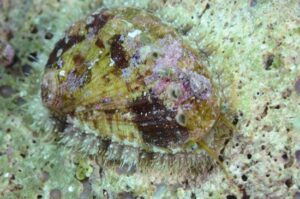A leatherback turtle swimming gracefully through the open ocean is arguably one of the most majestic sights in the natural world. Leatherbacks are the largest of all sea turtles, with the biggest reaching well over two metres in length and weighing over half a tonne, yet they seem to swoop effortlessly through the water.
Why are leatherback sea turtles are so special?
They are one of the rarest turtles to see underwater, even though the species has a global reach. In fact, leatherback turtles have the widest global distribution of any reptile, from Alaska to Norway to Cape Agulhas in Africa and the southernmost tip of New Zealand. They are found in all tropical and subtropical oceans, and their range extends well into the Arctic Circle, but while we can find research and information about them nesting on beaches, their life underwater remains pretty unknown. One strategy for achieving more information about their underwater lives was to monitor their preferred food (jellyfish) and look for them in feeding grounds, and it was successful.
Once prevalent in every ocean except the Arctic and Antarctic, the leatherback population is rapidly declining in many parts of the world since they face threats on both nesting beaches and in the marine environment, so much so that both the Eastern and Western Pacific subpopulations are officially categorized as Critically Endangered on the IUCN Red List, with Eastern Pacific leatherbacks considered the world’s most endangered sea turtle population.
Unfortunately, leatherback turtles are still hunted by the local community in some areas, also in the territory we visited, and some specimens have had bad encounters with humans. Interactions in the water should always be respectful of their living spaces and we should avoid placing turtles in stressful conditions.
The leatherback turtle looks quite different from other species of sea turtle because it does not have a hard carapace (shell) like Green, Hawksbill or Loggerhead turtles; it is instead covered by a grey/black layer of flexible, leathery skin (from which it gets its name).
Leatherback sea turtles can dive down to 1,200 meters and hold their breath for up to 85 minutes. Commonly, they dive to depths around <200 m, with a maximum dive duration of under 40 min, but cases of very deep (>500 m) and prolonged (>70min) dives have also been recorded by researchers monitoring them with special satellite transmitters. Studied turtles have also shown great variation in their dive activity. They displayed a diel rhythm (longer and deeper dives at night) and changed their diving behaviour in different periods. Most dives were V-shaped, and several dives below 700 m were recorded. This is thanks, in part, to their elastic carapace and plate, and in part, to their capacity for storing a large amount of oxygen in their blood and tissue. Their paddle-shaped front flippers do not have claws and are also extremely long, much longer than those of other sea turtles.
Researchers have only been able to properly study their behaviour in the wild in recent years thanks to technology and satellite transmitters. It’s fascinating to see them swimming in the open sea, holding their breath to dive to feed on jellyfish, and to think that some of these reptiles might be the same age as our grandparents.
While they are very different from other species of sea turtles, they haven’t changed in quite some time. Leatherback turtles have existed in their current form since the time of the dinosaurs!
During this trip, I particularly enjoyed the Horizon 0.5 Ultrastretch neoprene wetsuit and the new X-Wing C-S freediving fins with a 100% carbon fin blade which is powerful and flexible. Thanks Mares just add water!
To see more about our activities, don’t forget to follow us on our webpage, Facebook and Instagram, or sign up for our newletters.
The post Leatherback sea turtles appeared first on Mares – Scuba Diving Blog.
Read MoreDiving, conservation, freediving, leatherback, Mares, ocean, photography, research, SSI, turtle, underwaterMares – Scuba Diving Blog


